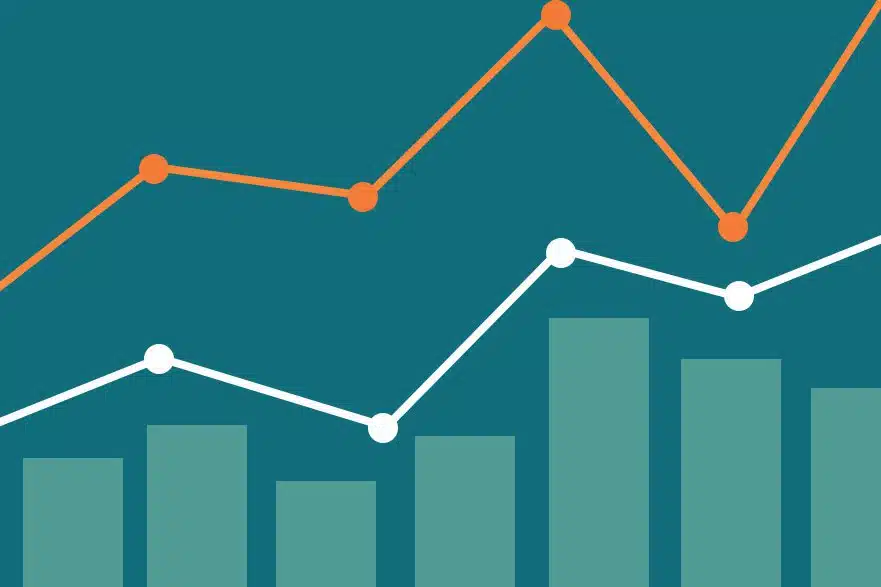

When we have conversations with new clients about their websites, we often find they’ve never once – not with Google Analytics, not with New Relic, not with Omniture, or even web server stats – put tracking in place for their websites
It’s depressing. But then – the response often goes – why would you do that anyway? Just to look at graphs? That’s depressing too, if you don’t know what you’re looking for!
Let’s fix some of that.
“We have so much data on the web, almost all of it available for free, that we dive into the the data ocean hoping that magically awesome things will follow. They never do. […] Identify the purpose. Create a Digital Marketing Measurement Model. Then go after data.”– Avinash Kaushik, Analytics Evangelist and Author (Source: Entrepreneur Blog)
First, let’s clear up a misconception: Web Analytics are not a cure-all for your business. This is why people have so much trouble with them. It’s a little like buying a hammer, displaying it proudly in your garage, then wondering why two boards aren’t sticking together. You never actually used the hammer as it was meant to be used!
It’s important to remember that even the biggest databases, with long histories, and high accuracies, can only tell you what people have done with your website – that database itself will never tell you why someone did something. It’s just not what web analytics is for, and it’s why we have to apply our smarts to the numbers to make them valuable.
Web analytics can only tell you how your websites have been used, and nothing else.
If you want to understand whether the site made your users happy, you’ll have to have some goals in mind first.
- Visitors spending more minutes per page may be success – if that page’s job is to play a video, move the visitor through a large amount of text content, or ask them to complete a task. If they’re spending ten minutes on your checkout, however, that’s probably bad news.
- Higher pages-per-visit may also be good news – unless they’re the wrong pages! If lots of people move immediately from a product page back to your homepage, and then off to some entertainment media… They’re moving the wrong direction, because they’re not buying!
By actually using your web analytics, and reading beyond the easy graphs, you’ll begin to see patterns in behaviour that will tell you if your website is succeeding in a general sense.
Configuring your analytics tool properly is important here. Most web analytics platforms will have some kind of Goals system, tracking for transaction processing, or similar. Make sure that, if your website has anything resembling a process, it’s represented in these tools.
This includes shopping carts, contact forms, even paginated articles. If there’s a call-to-action on a given page (and there should be) that’s not your main navigation, you probably want to know if people are making use of that CTA and moving through your funnel appropriately.
Once you begin to read between the stats, web analytics can help inform your future plans.
“The goal is to turn data into information and information into insight.”
– Carly Fiorina, as CEO of HP (Source: HP Speeches)
This is the applicability part of web analytics, and it’s where a lot of companies fall down. The best time to use analytics is in the next growth stage of your website’s development lifecycle. By using and monitoring goals, looking at the paths users follow through your site, and more, you can get a sense of which pages are working, and even why some pages work better than others.
Having this knowledge will let you work with your web designers to build better formats for your content. You’ll be able to understand:
- which form fields on your contact pages are being skipped regularly,
- which pages have been found on mobile as opposed to desktop search,
- which external and internal links are being followed, and how users from these links are using your website,
- the kinds of queries people are finding the site for in search, and whether they’re staying on your website once there.
All of this information will inform your further website development and content creation efforts in big ways, if you let it.
Are you being found for a lot of similar search terms, but seeing people leave your website pretty quickly? Your content for that topic might not be up to snuff!
Getting a lot of traffic from social, on your blog, but not getting leads from social sources? You may want to look at
Matching your web analytics to your business goals can be tough.
“Can you tie your PR efforts directly to sales? Can you tie your customer service efforts directly to sales? No, but these aren’t held to the same standard, perhaps because they’re not the new kid on the block, perhaps because they’re not ‘digital.’ Marketers should define thoughtful metrics and measure the work they do in social, but not necessarily in terms of ROI.”
– Adam Kleinberg, CEO at Traction (Source: CMO.com)
eCommerce makes it easy on us; sales are tracked, the numbers are all there, and – assuming you’ve hooked up all the tools – that gets filtered back into your analytics directly on a per-transaction basis.
What about things like contact forms, or businesses where the website is only designed to generate leads? Even though it’s tough, it’s important – and there are a lot of methods you can use to do this.
For example; if you know a few things about your sales process and close rates, you’ll be able to figure out the average value of your contact form’s completions. That’s a number you can manually enter as the “estimated value” of your contact form – and update as your close rates or average project/sale values change. Voila! Metrics become visible, and your entire view of your website changes.
As Adam Kleinberg suggests in the quote above, this “actions to dollars” equation isn’t important or appropriate for everything. Deciding what it is important for – and which actions to measure against hard dollars or sales – is also part of using web analytics in a smart way.
What we hope you’ll take away here is that, like any other tool, web analytics must be applied to something before they’re actually useful.
Even if you’re a year out from your next website design project, and don’t have any plans to change your properties, beginning the process can be as easy as signing up for a free web analytics tool and gathering data passively between now and your next strategy meeting.
Then, once you’ve made changes based on solid data and an understanding of your website’s purpose, your business – and your customers – will thank you.
Source: Hello BLOG
Recent Articles
Write For Us
Think you’ve got a fresh perspective that will challenge our readers to become better marketers? We’re always looking for authors who can deliver quality articles and blog posts. Hundreds of your peers will read your work, and you will level up in the process.Ready to grow? Say Hello








